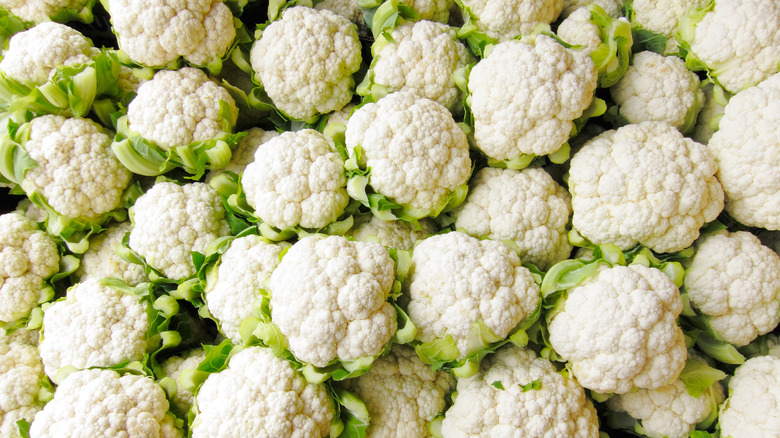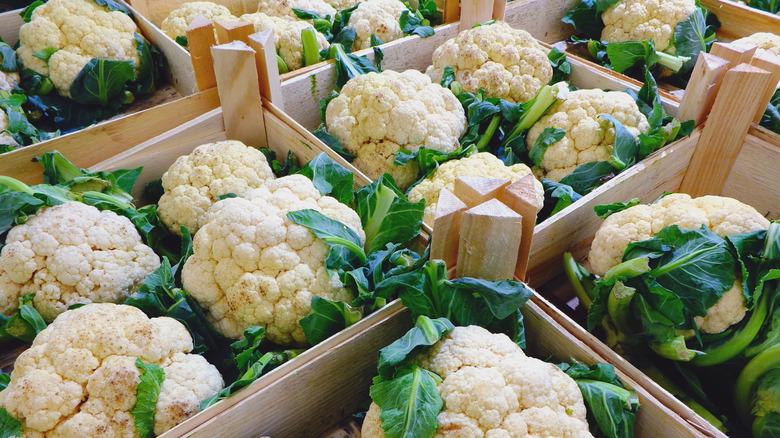What To Look For When Buying Fresh Whole Cauliflower
Cauliflower has experienced a bit of a boom of popularity in the last decade, and for good reason. What was once thought of as broccoli's less desirable cousin has now been recognized for the versatile vegetable that it is. People have found ways to transform cauliflower into everything from pizza crust to a substitute for chicken. Low in calories and high in nutrients, cauliflower is simple to cook with and makes a great addition to any meal. If you're on the hunt for cauliflower to add to your weekly menu, there are a few things to consider regarding finding the best produce.
When picking out a head of cauliflower, look for one that has an even, slightly off-white color. Avoid the options that have any bruises or brown spots. The leaves of the cauliflower should be green, and the florets — which are the ends of the vegetable that you eat — should form a surface that is free of any gaps or holes. Once you've found a head of cauliflower that looks appealing, give it a feel to make sure there aren't any soft or wet spots. The cauliflower and its stem should feel firm and dense.
The perfect cauliflower should be firm with no brown spots
Your sense of smell will also come in handy when determining the freshness of cauliflower; it should not have much of a scent at all, so if it has an unpleasant odor, it's best to put it back. After picking out the best in the batch, you'll be able to store it in plastic and keep it in the refrigerator, where it will stay fresh for about a week.
Cauliflower is available at major grocery stores year-round, but if you're looking to find a locally grown option at the farmer's market, the typical cauliflower season runs from June to November. You may even find different colored cauliflower, such as purple or yellow, but the same rules apply when it comes to freshness: It should have an even color, and be firm to the touch. With your fresh cauliflower in hand, the doors are now open to a wealth of low-carb culinary possibilities. Just remember to make the most of your vegetable, and don't throw away the inner core. You can turn it into rice or toss it in a stew.

